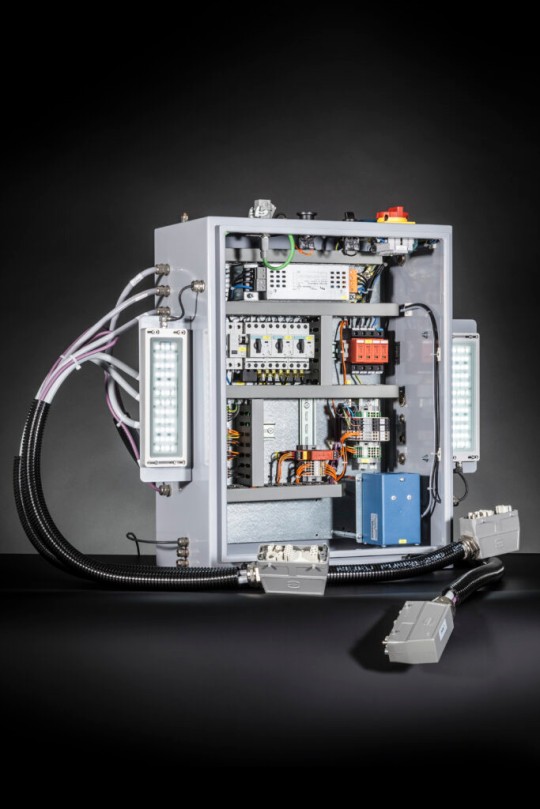Wind Energy System Assemblies
Situation
Renewable energy production, particularly wind power, is becoming increasingly significant. Wind turbines, once considered massive with hub heights of 60 meters and power outputs of 1.5 megawatts, are now the industry standard and are built worldwide using advanced German engineering. For these turbines to operate efficiently and cost-effectively, achieving the ideal balance between torque and speed is essential. This requires precise rotor blade adjustment—not just rotating the turbine head to align with the wind. In high wind conditions, adjusting the rotor blades also serves as an effective braking mechanism, adding an important layer of safety.
Challenge
All three rotor blades must be adjusted synchronously to prevent excessive stress on any single blade. This requires a centralized control system that remains operational even in the event of a power failure. The challenge is further complicated by the fact that the hub is only accessible externally, and the slip ring on the rotor shaft provides only a limited number of connection points. As a result, placing the control system in the hub or housing the rotor blade technology within the nacelle is not a viable option. Additionally, due to the turbine's height and restricted accessibility, on-site installation in the hub is neither practical nor cost-effective.
Solution
To address these challenges, the rotor blade adjustment system is powered entirely through the slip rings, minimizing the number of required contacts. A central control unit synchronizes the blade positions, with each blade having its own dedicated drive control. This system includes a battery backup to ensure continued operation in the event of a power outage.
Designed for efficiency, the solution is modular and plug-and-play. All connections undergo pre-testing at a specialized test station with contact force monitoring, ensuring error-free assembly and rapid deployment. A single connector kit links the central control module to each drive control, which then adjusts the rotor blades via servomotors. With a prefabricated installation, the system can be easily integrated into the hub at ground level. Power, signals, and bus connections are consolidated into a single, durable plug connector, allowing for fast and reliable electrical installation of the rotor blades.

Do you have questions? We will help you with the selection of the right products and are at your disposal.
- Johannesburg: 011 462 8752 | sales@helukabel.co.za
- Cape Town: 021 534 1117 | capesales@helukabel.co.za
- KwaZulu-Natal: 031 700 1883 | kznsales@helukabel.co.za
